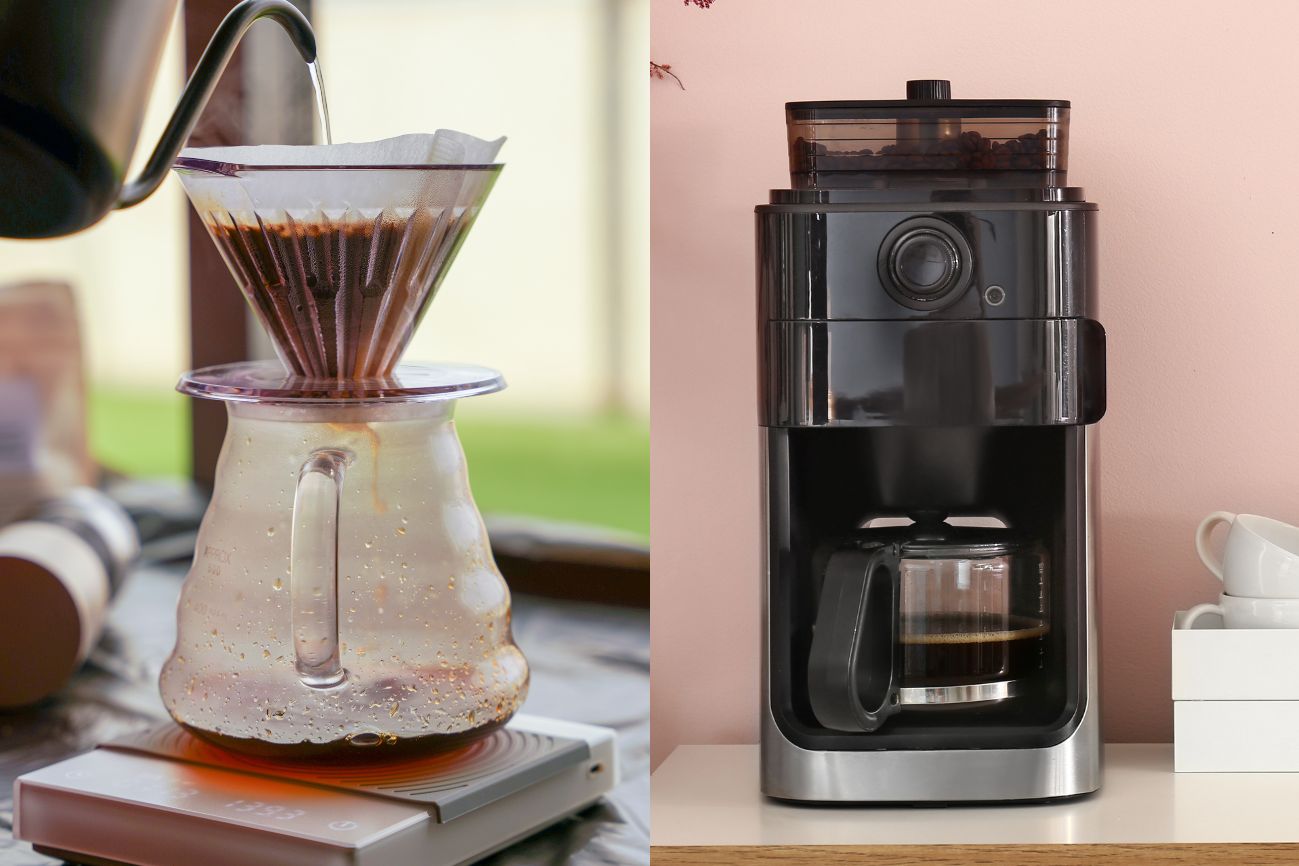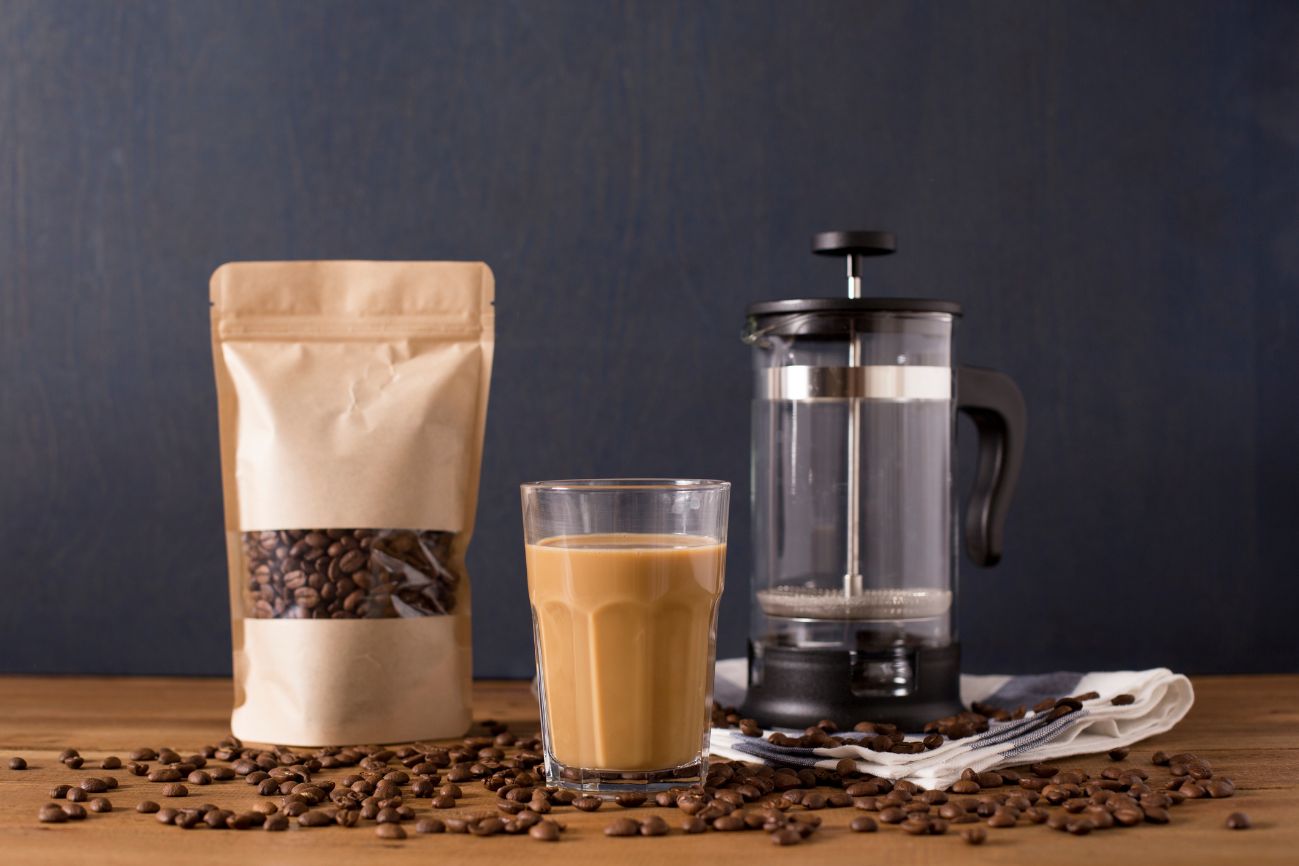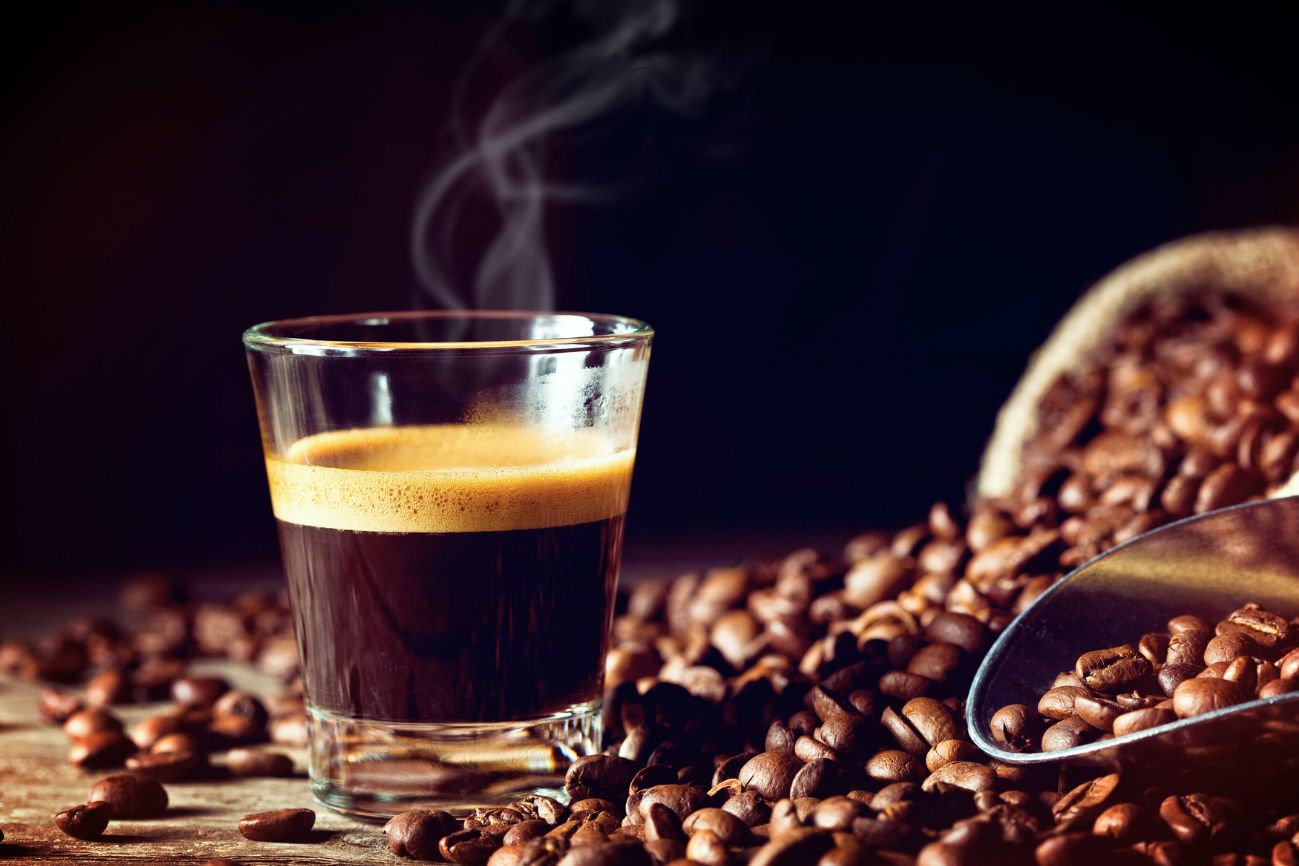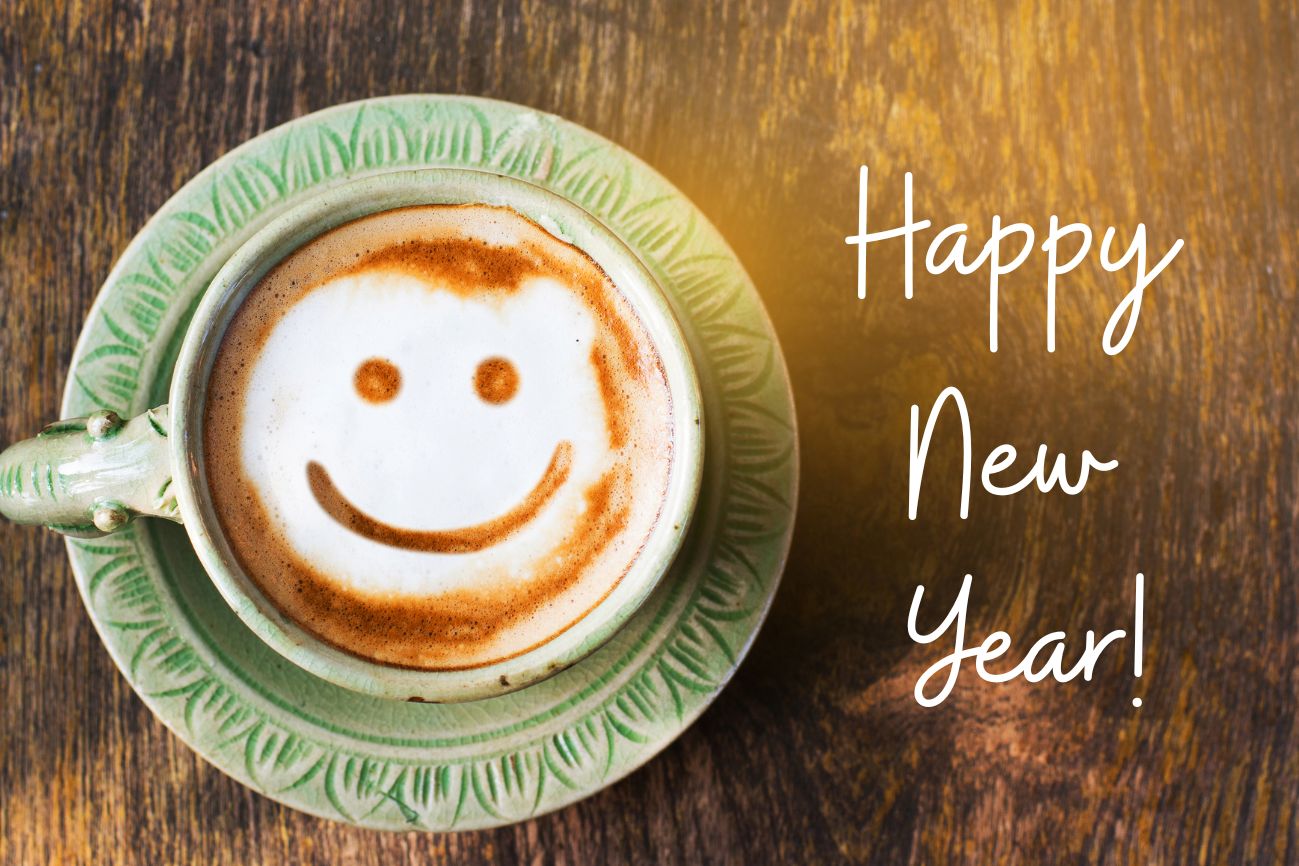Do you think that drip coffee and pour-over coffee are the same methods?
If you think that, you are right but also wrong. Drip and pour-over coffee are similar methods that require putting hot water on coffee grounds. However, some other aspects distinguish both of these methods, like their brewing process, brewing duration, water temperature, ease of preparation, equipment, flavor, cleanliness, and many other factors.
Therefore, if you’re new to drip and pour-over coffee and want to learn everything about these methods, you’ve come to the right place. Here we will discuss everything related to the Difference between pour-over and drip coffee, the best coffee brewing method, Pour-over coffee benefits, Drip coffee pros and cons, and many other things.
So, keep in touch to get all the information about pour-over vs drip coffee.
Basics of Pour-Over Vs Drip Coffee
Pour-Over Coffee: With the pour-over brewing method, you handle every step of the brewing process by yourself. You heat water by yourself and then pour the heated water over your coffee grounds using a paper filter and place it in a pour-over cone and gooseneck kettle. When making pour-over coffee, you are in complete control of the procedure. The water temperature, water flow, and blooming time can all be adjusted during this procedure. By changing the consistency, flow, and time, you can create a rich and strong coffee while also changing its flavors.
Drip Coffee: Also known as automatic coffee maker brewing, it is similar to the pour-over method, but drip coffee makers do it automatically. You don’t have to manually complete the entire brewing process. In drip coffee makers, water is automatically heated, then poured over coffee grinds and filtered into a mug. This method is the more advanced, quick, and time-saving version of pour-over coffee.
What About Drip Coffee Bags?
Drip coffee bags (or drip coffee filter bags) are a convenient, single-serve version of pour-over coffee. These pre-packaged coffee filters contain ground coffee and allow you to manually control the brewing process, similar to traditional pour-over methods but with added convenience. They are perfect for hiking or trips.
Key Differences Between Pour-Over and Drip Coffee
1. Brewing Method
Pour-over: Pour-over is the simplest and easiest method for preparing coffee. You won’t need an automatic coffee maker to make pour-over coffee. Most pour-over coffee makers are stainless steel or glass kettles with a gooseneck. However, if you don’t want to purchase gooseneck kettles, you can also look for pour-over cones. Most people prefer to use gooseneck kettles because they allow you to manage the pour and ensure the grounds are saturated evenly.
This method requires the use of a stainless-steel filter paper, which is placed within the gooseneck kettle. Then, after that, place the coffee grinds on this filter. Next, bring the water to a certain temperature and gradually pour it over the coffee grounds in a circular motion.
After filtering, your coffee will be poured into a glass or mug. So, this was the pour-over brewing method. It’s not so difficult, you can easily make and enjoy your coffee.
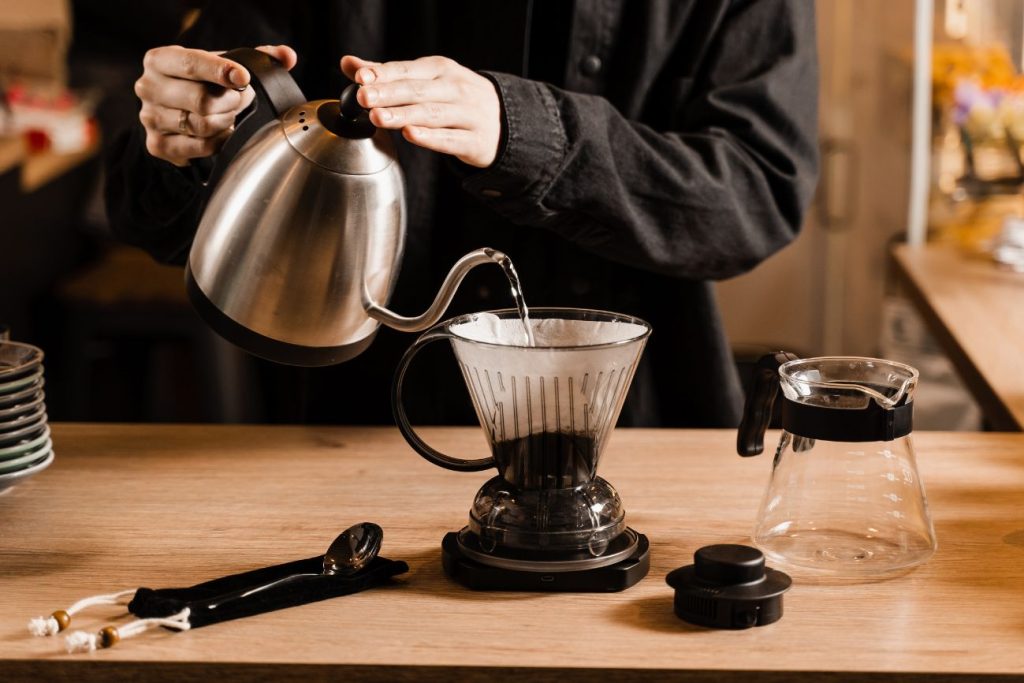
Drip: The drip coffee method is the easiest and also time-saving coffee brewing method in which you use an automatic coffee machine. To prepare coffee in a drip coffee maker, you have to fill the reservoir with the desired amount of water. Put a paper filter and your freshly ground coffee beans in a spot.
Then click the button to begin the procedure. The water will then be automatically heated by the coffee maker and poured over the coffee grinds in a filter basket. After that, your freshly brewed coffee will be gathered in a mug or container.
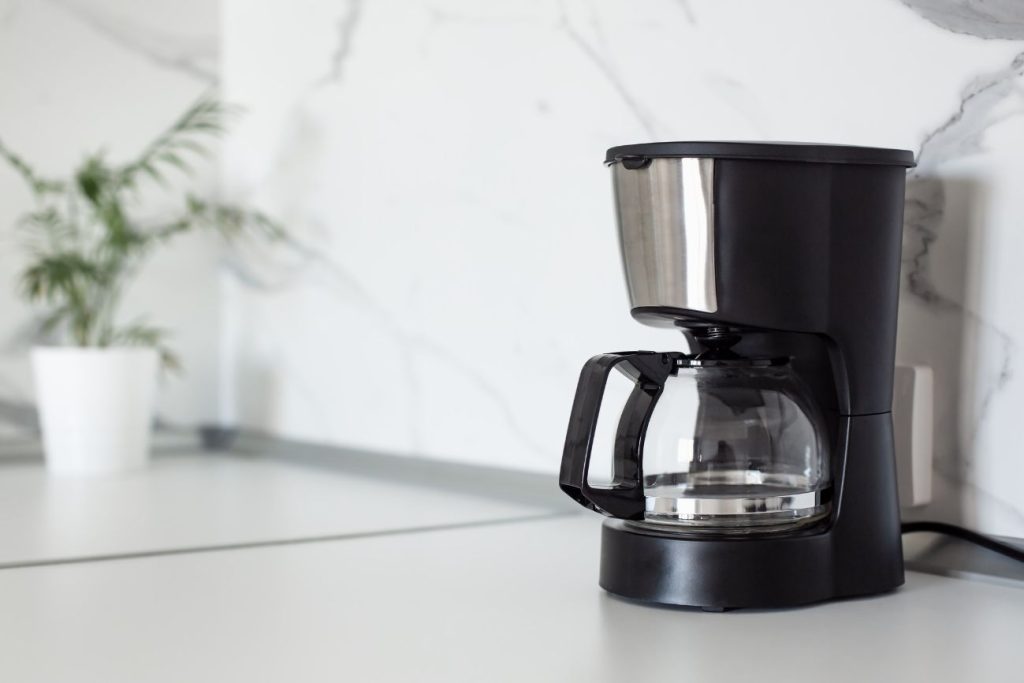
2. Flavor Profile
Pour-Over: This method is known for producing clean, nuanced flavors. Since you control the brewing variables, you can extract the coffee’s subtle notes and aromas, highlighting its origin and roast characteristics.
Drip Coffee: The flavor is often more uniform but may lack the complexity and brightness of pour-over. However, modern drip machines with advanced features can come close to achieving pour-over quality.
3. Customization
Pour-Over: You control the water temperature, pour rate, and brewing time in pour-over brewing. This method allows you to easily control and adjust each step of the brewing process, including the water temperature, blooming time, and brewing time. You can experiment with pour-over coffee and customize each step on your own to achieve the greatest coffee flavor.
Drip Coffee: However, you are unable to change or manage the brewing process. We know that automatic drip coffee makers brew drip coffee automatically. Therefore, these machines do everything on their own, giving you less control over the brewing process.
4. Equipment
Pour-Over:
- Pour-over cone, or a draper like Hario V60 or Chemex
- Filter
- Mug
- Gooseneck kettle
- scale
Drip Coffee:
- Automatic drip coffee maker
- Filters
- Power supply
5. Coffee Beans and Grind Size
The medium grind size is required for both methods, and you can simply choose any kind of coffee beans for both methods according to your preferences. In both coffee methods, you can choose dark-roasted beans for powerful flavors, medium-roasted beans for fruity flavors, and light-roasted beans for tangy flavors.
To get a complete guide on “Coffee Roast Types,” You can check our detailed post on “How to choose the right coffee roast”.
6. Capacity
Pour-Over: Pour-over coffee makers can only produce 1 to 2 cups of coffee each day, so they are not the best option if you need to brew huge batches of coffee every day. The entire manual process can take a long time, so using a pour-over will require a lot of work and time.
Drip Coffee: The ideal choice for you is a drip coffee maker if you have to prepare large batches of coffee every day. You can save time and energy by making several cups of coffee at once. Therefore, if you are hosting large gatherings and serving guests, choose drip coffee makers.
7. Time Consumption
Pour-Over: Pour-over is the most time-consuming method when it comes to time. Heating the water separately and then checking its temperature with a thermometer, and then adjusting it to the desired temperature, will take a lot of time. Also, you have to pour the water over the coffee by yourself. Therefore, all of these steps take a long time. So, you should not choose pour-over if you are a busy person. However, this works best for people who prefer spending time on these rituals and who want to take pleasure in brewing coffee all by themselves.
Drip Coffee: A Drip coffee maker is definitely for you if you are a busy person who values time above all else. Making drip coffee is simple and takes very little time. All you need to do is press the button, and the drip coffee makers will complete brewing automatically. So you won’t have to do anything on your own. There are currently a lot of drip coffee makers with scheduling functions. You can schedule when you’ll need a cup of coffee by using this feature.
8. Portability and Compatibility
Pour-Over: Pour-over Coffee makers are very compatible and portable. They are easy to keep in your kitchen’s small spaces. Additionally, because these coffee makers are portable, you can easily fit them in your backpack. These coffee makers don’t require electricity to operate, so you can have a freshly brewed cup of coffee even in the mountains, forests, and on road trips.
Drip Coffee: However, drip coffee makers are not compatible or portable. Unlike pour-over coffee makers, they are not portable. These coffee makers require a power supply to operate. Therefore, drip coffee makers can’t be used to prepare coffee if you are not at home and do not have a power source.
9. Durability
Pour-Over: Pour-over coffee makers are built of glass and stainless steel, which prevents them from breaking. Pour-over coffee makers have a long lifespan. They will last for years, and you will only need to purchase them once. Only if you drop them and break them will you have to buy them again; otherwise, there’s no need.
Drip Coffee: The drip coffee makers, on the other hand, are made of plastic and have a one-year lifespan. The majority of drip coffee machines break down internally and stop working. Thus, you will need to purchase them repeatedly. Because drip coffee machines are not particularly durable, you will need to purchase a new one nearly every year.
10. Cleaning
Pour-Over: When it comes to pour-over coffee makers, they are simple to clean; all you have to do is rinse them with water after each use. Coffee stains can appear on glass and stainless-steel surfaces, but this won’t affect the coffee’s quality, flavor, or taste, so don’t worry about it.
Drip Coffee: Cleaning drip coffee makers can be a challenging task. Maintaining the cleanliness of each part of these devices would be challenging. To keep drip coffee machines clean and bacteria-free, you must do regular cleaning and descaling. Bacteria can grow in these machines if you don’t clean each part of them regularly.
11. Cost Consideration
Pour-Over: When it comes to price, pour-over coffee machines are initially less expensive, but they rise in price when you need to brew large batches of coffee. Separate equipment, such as pour-over cones, gooseneck kettles, filters, and thermometers, can be more expensive than necessary. Consequently, pour-over coffee machines might be very costly for you over time.
Drip Coffee: However, because you don’t need to purchase separate filters and other equipment, drip coffee makers are far less expensive than pour-over coffee makers.
12. Environmental Impact
Pour-Over: We use reusable paper filters in pour-over coffee makers, which are environmentally friendly and biodegradable. Pour-over coffee makers are therefore, an environmentally friendly option.
Drip Coffee: In drip coffee makers, however, the plastic components are not biodegradable, which is not a good thing, but the reusable mesh filters are also environmentally friendly. Therefore, if we look at environmental considerations, we should use pour-over coffee machines.
| Feature | Pour-Over Coffee | Drip Coffee |
|---|---|---|
| Brewing Control | Full control over water flow, temperature, and extraction. | Automated with minimal user control. |
| Flavor Profile | Rich, nuanced, and balanced flavors. | Consistent but can be less flavorful. |
| Ease of Use | Requires practice and precision. | Very easy—just push a button. |
| Brewing Time | Takes 3-4 minutes per cup. | Can brew multiple cups in 5-10 minutes. |
| Ideal For | Coffee enthusiasts who enjoy the process. | Those who need coffee quickly with minimal effort. |
| Portability | Compact and doesn’t need electricity. | Requires an outlet, making it less travel-friendly. |
Pour-Over Coffee Pros and Cons
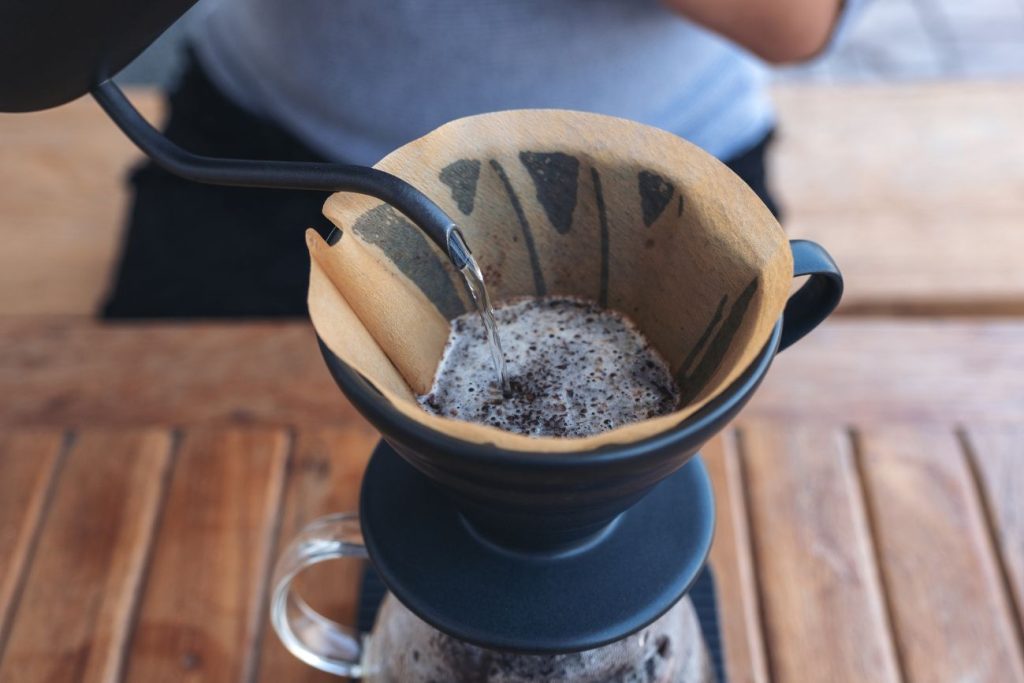
Pros:
- Best Flavor: You will get bold and rich flavors every time.
- Full Control: You can easily control every step in the brewing process.
- Different Flavors: You can create different flavors of coffee every time by changing the water temperature, flow, and other factors in the brewing process
Cons:
- Time-Consuming: You need to spend a lot of time doing all the brewing steps manually, so it’s definitely time-consuming.
- Difficult: It can be difficult for you to learn all the techniques if you are a beginner.
- Inconsistent Results: You will get inconsistent results in the beginning.
Drip Coffee Pros and Cons
Pros:
- Easy to Use: You just need to push a single button, and it will start brewing.
- Multiple Servings: You can make large batches of coffee at a single time easily.
- Minimum Efforts: You can easily get consistent results with minimal effort.
Cons:
- Limited Control: Because drip coffee makers are automatic so you will have limited control over the brewing process.
- Not Good Flavors: You may not get fully extracted coffee or nuanced flavors.
- Quality can vary significantly depending on the machine.
Pour-Over Vs Drip Coffee: Which Method Matches Your Lifestyle?
1. For the Busy Bee
If you’re always on the go, drip coffee is the clear winner. With its automated process, you can set it up and let it work while you get ready for your day. Modern machines with programmable timers can have your coffee ready when you wake up.
2. For the Coffee Enthusiast
If you love the art and science of brewing, pour-over coffee is an excellent choice. It allows you to experiment with grind size, water-to-coffee ratios, and pouring techniques to achieve the perfect cup.
3. For Entertaining Guests
Drip coffee is the best option when you need to serve multiple cups quickly. Many machines can brew up to 12 cups in one go, making them perfect for gatherings.
4. For Small-Batch Brewing
If you’re making coffee for one or two people, pour-over offers a personalized experience. You can brew exactly what you need without waste.
Pour-Over Vs Drip Coffee: Popular Brands and Recommendations
Pour-Over:
- Hario V60: Renowned for its versatility and simplicity.
- Chemex: Perfect for multiple servings.
- Kalita Wave: Ideal for beginners with its flat-bottom design.
Drip Coffee:
- Technivorm Moccamaster: Known for consistent, high-quality brews.
- Breville Precision Brewer: Offers customizable brewing options.
- Mr. Coffee: Affordable and reliable for everyday use.
Pour-Over Vs Drip Coffee: Tips for Brewing the Best Coffee
Pour-Over:
- Make sure always to use freshly ground coffee for optimal flavor.
- Always pre-wet the filter to remove any papery taste.
- Make sure to maintain a consistent water temperature between 195°F and 205°F.
- Always pour over water in a circular motion.
Drip Coffee:
- Use filtered water.
- Regularly clean the machine to prevent buildup.
- Experiment with coffee-to-water ratios for your preferred strength.
Bottom Line
Both coffee makers are good, based on their benefits and drawbacks. After reading all of the above instructions, selecting a coffee maker is simple. Coffee makers should always be chosen based on your demands, such as how much coffee you need daily, your budget, your preferred flavor, and other aspects like quality and durability.
Regardless of your level of coffee consumption, experimenting with both methods can enhance your understanding of the art of coffee brewing. So, grab your favorite beans, try different methods, and enjoy finding the perfect cup.

